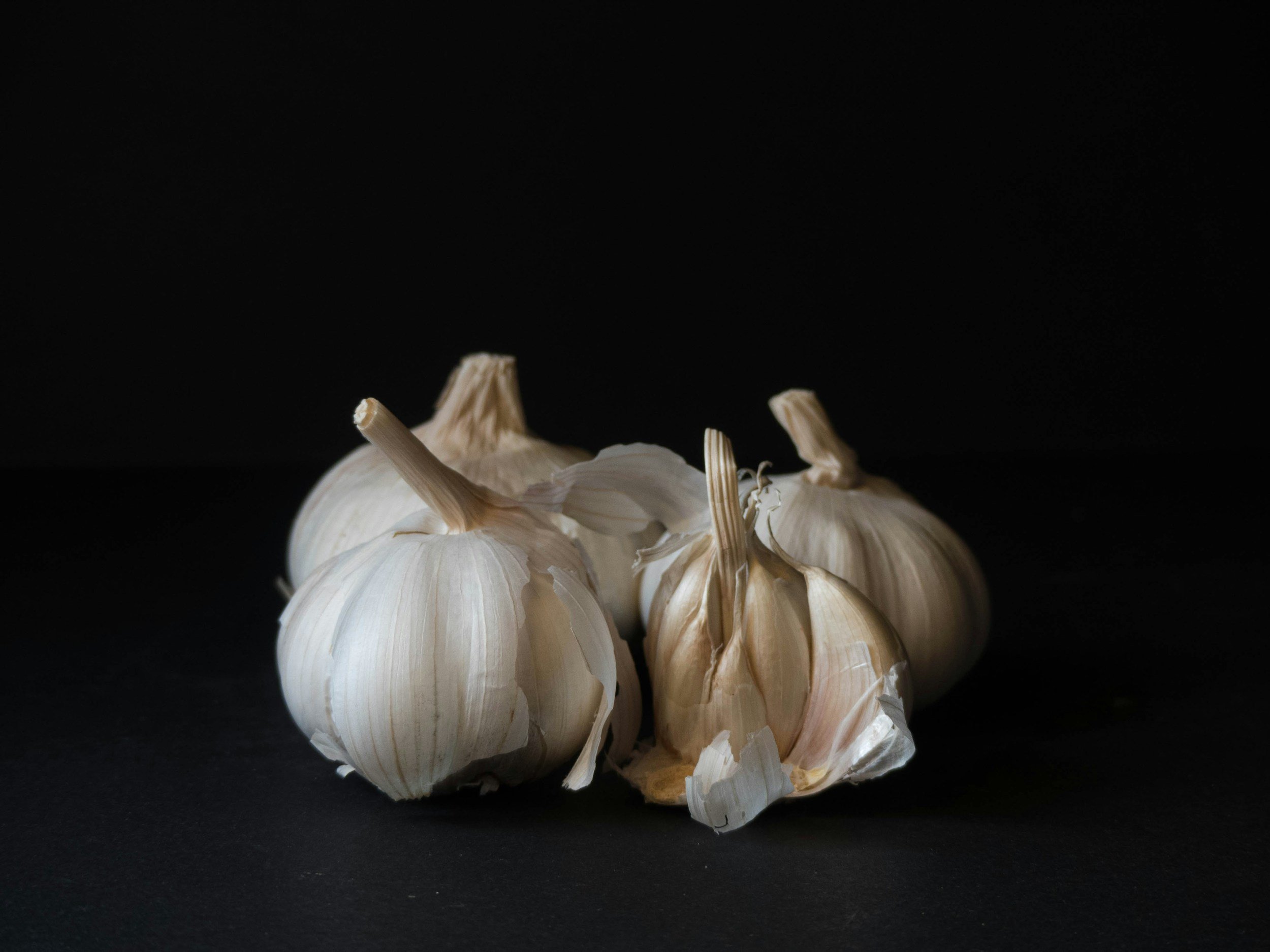
Garlic
Garlic (Allium sativum)
Garlic (Allium sativum) is a pungent kitchen staple with a long history in traditional herbalism. Warming and penetrating, it supports sluggish digestion, helps keep the chest clear in cold, catarrhal seasons, and is valued for its antimicrobial bite. Fresh, infused in oil (used appropriately), or taken as food, garlic is a hardworking ally in everyday tonic and winter-wellness blends.
Plant family
Amaryllidaceae
Other significant names
Stinking Rose.
Parts used
Bulb
Typical forms of prescription
Fresh herb
Tablet.
Dosage:
Tincture (1:2): 40–80 ml per week;
Dried herb: 0.4–1.2 g per day or plenty of fresh cloves in cooking.
Garlic (Allium sativum) - Clinical Snapshot
Actions
Antimicrobial (broad-spectrum)
Antiviral
Antifungal
Antibacterial
Antiparasitic
Antithrombotic (prevents blood clots)
Hypotensive (lowers blood pressure)
Hyperlipidaemic (lowers blood lipids)
Antioxidant
Cholagogue (stimulates bile flow)
Carminative (relieves gas)
Diaphoretic (promotes sweating)
Expectorant (clears mucus)
Antispasmodic
Rubefacient (stimulates circulation when applied externally)
Indications
Cardiovascular health:
Hypertension (high blood pressure)
Hyperlipidaemia (high cholesterol)
Atherosclerosis
Prevention of thrombosis (blood clots)
Infections and immunity:
Colds and flu
Respiratory infections
Digestive infections (e.g., bacterial, fungal, or parasitic)
Candida overgrowth
General immune support
Digestive complaints:
Bloating
Flatulence
Poor digestion
Respiratory issues:
Bronchitis
Coughs
Catarrh (mucus build-up)
⚠️Cautions / Safety⚠️
May cause gastrointestinal irritation in sensitive individuals, especially when raw
Use with caution in blood clotting disorders or when taking anticoagulant medication (e.g., warfarin)
May cause body odour or garlic breath
Topical application (e.g., on warts or infections) can cause skin irritation or burns if not diluted properly
Allium sativum
Phytochemistry and Pharmacology
-
Includes: Allicin, alliin, ajoene, diallyl disulphide
Action: Antibacterial, antifungal, antiviral, antiparasitic, hypolipidemic, antihypertensive
Use: These are the primary active compounds in garlic, with allicin forming when garlic is crushed or chopped (from alliin via the enzyme alliinase). Allicin and its derivatives provide broad-spectrum antimicrobial effects, help reduce cholesterol and blood pressure, and support immune resilience. Ajoene is particularly effective as an antifungal and mild anticoagulant.
-
Includes: Sulphurous oils contributing to garlic’s pungency
Action: Antimicrobial, expectorant
Use: These volatile oils give garlic its characteristic aroma and flavour. They help clear respiratory congestion, fight infection, and support lung health, especially in chronic or productive coughs.
-
Includes: Selenium, manganese, vitamin C, and vitamin B6
Action: Antioxidant, immune support, enzymatic cofactor
Use: Garlic’s micronutrient content helps support immune function and contributes to detoxification and enzyme production, enhancing overall health benefits.
-
Action: Cardioprotective, antimicrobial, cholesterol-lowering
Use: Saponins support garlic’s reputation for heart health, helping to reduce blood lipids, strengthen blood vessels, and inhibit pathogenic bacteria.
-
Includes: Quercetin, kaempferol
Action: Antioxidant, anti-inflammatory, capillary stabilising
Use: These help protect against oxidative damage, support vascular health, and enhance anti-inflammatory effects, contributing to garlic’s use in chronic inflammation, cardiovascular disease, and immune modulation.
Traditional use
Garlic has been used for centuries across cultures as both food and medicine. In traditional European folk medicine, it was a go-to remedy for earaches, intestinal worms, and menstrual imbalances. Its strong, warming energy made it particularly useful for clearing cold, damp conditions and supporting immune and circulatory function. Garlic was often eaten raw, steeped in vinegar or oil, or used in poultices to draw out infection and ease local pain.
Clinical Discussion
Garlic is a potent antimicrobial herb, used primarily in dietary or fresh medicinal form. Its key active compound, allicin, is formed when the enzyme alliinase converts alliin after the clove is chopped or crushed. It’s best to let garlic sit for 10–15 minutes after chopping before eating or cooking to maximise this reaction.
Because alliinase is deactivated by stomach acid and heat, raw or lightly cooked garlic is more medicinally active than heavily cooked forms. Allicin is partially excreted via the lungs, making garlic especially useful in respiratory infections. It acts as a mild expectorant, helping shift wet coughs, particularly those linked to asthmatic symptoms.
Garlic has a wide range of therapeutic uses:
Antibacterial, antifungal, and antiviral – used for infections, including thrush, ringworm, and the common cold.
Cardiovascular support – shown to help reduce cholesterol, lower blood pressure, and support overall heart health.
Digestive support – high in prebiotic fructans, feeding beneficial gut flora and improving microbiome diversity.
Immune stimulant – used preventatively during cold and flu season.
A traditional syrup made by layering chopped garlic with honey or sugar is a simple and effective cough remedy, particularly in children (in small, diluted amounts).
Note: High doses of raw garlic may cause gastric irritation or nausea in sensitive individuals. Garlic can also thin the blood and should be used cautiously alongside anticoagulant medication.
Cultivation/Harvesting
Garlic is a hardy bulbous perennial, typically grown as an annual crop. It thrives in full sun and loose, well-drained soil with moderate fertility.
Planting: Sow individual cloves (pointed side up) in autumn or early spring, spacing them about 15 cm apart. Autumn planting typically yields larger bulbs.
Growing: Keep well-weeded and watered during dry spells. Garlic does not compete well with weeds.
Harvesting: Unearth bulbs in mid to late summer, once the leaves begin to yellow and wither. Gently lift with a fork and allow to dry (cure) in a warm, well-ventilated space for 2–3 weeks before trimming and storing.
Storage: Keep bulbs in a cool, dry place. Properly cured garlic stores well for several months.
Garlic also makes an excellent natural companion plant in the garden, helping deter pests such as aphids and fungal diseases when grown near roses, tomatoes, or fruit trees.
Key Botanical Features of Garlic (Allium sativum)
Growth
Type: Perennial, but often grown as an annual.
Size: Typically 30–60 cm (12–24 inches) tall.
Stem: In some varieties, a short, underground stem (bulb) produces long, narrow leaves and a flowering stalk.
Bulb & Roots
Bulb Type: Underground bulb, composed of cloves (modified leaf structures).
Bulb Size: It varies but is typically 5–10 cm (2–4 inches) in diameter.
Bulb Structure: Made up of multiple cloves (usually 6–12), covered in a thin, papery husk.
Root System: Fibrous roots extend from the base of the bulb.
Leaves
Type: Simple, linear, and grass-like.
Shape: Flat or slightly concave, tapering to a point.
Size: Leaves can grow up to 30–60 cm (12–24 inches) long.
Texture: Smooth, waxy surface.
Colour: Bright green to bluish-green.
Flowers & Scape
Flower Type: Small, white to pinkish-purple flowers, arranged in an umbel (rounded cluster).
Size: Each flower is 3–5 mm (0.1–0.2 inches) in diameter.
Flowering Stalk (Scape): In hard-neck garlic varieties, a tall, central scape emerges from the bulb, reaching up to 1 meter (3 feet) and ending in a bulbil-producing umbel.
Blooming Period: Late spring to early summer (May–July).
Pollination: Primarily insect-pollinated, though some varieties are sterile and propagate only through cloves.
Fruits & Seeds
Fruit Type: Garlic rarely produces true seeds but reproduces via cloves or bulbils.
Bulbils: Small, garlic-like structures produced in the flowering umbel of some varieties.
Habitat & Growth Conditions
Climate: Prefers temperate to warm climates, though it can tolerate colder regions when planted in the fall.
Soil: Prefers well-drained, loose, sandy-loam soil, rich in organic matter.
Sunlight: Requires full sun for optimal growth.
Distribution: Native to Central Asia, but widely cultivated worldwide in gardens and farms.
Sustainability/Conservation
Least concern.
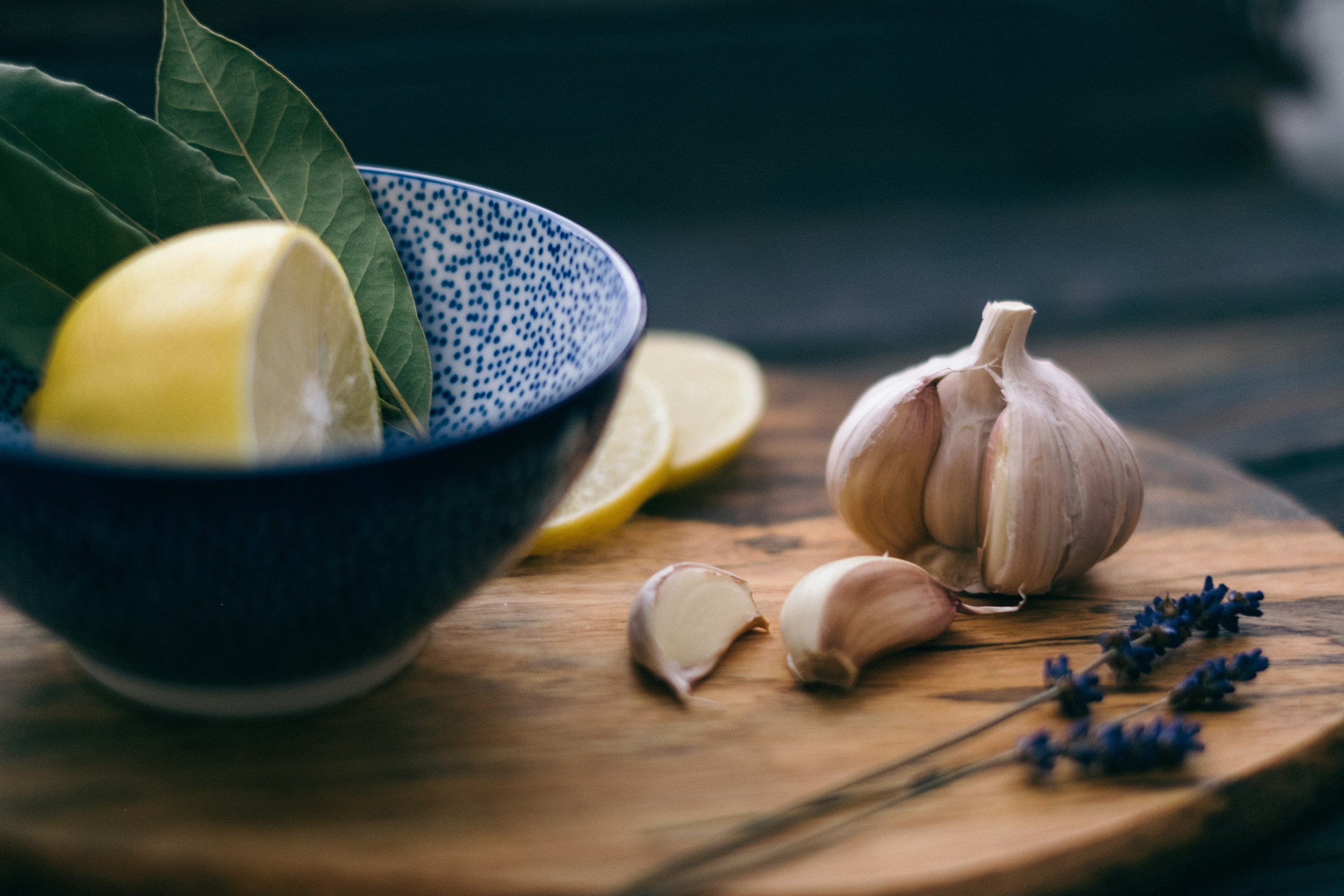
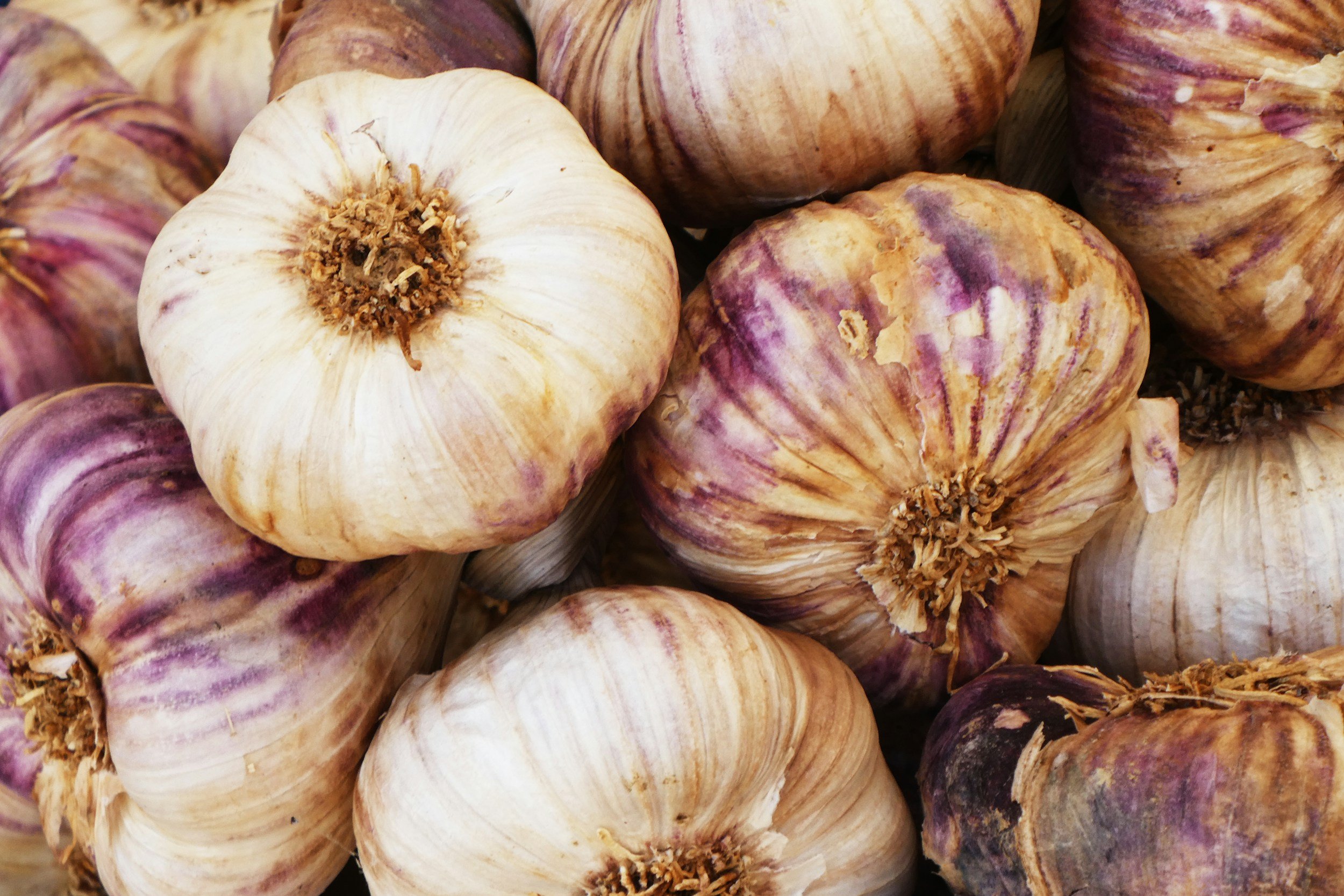
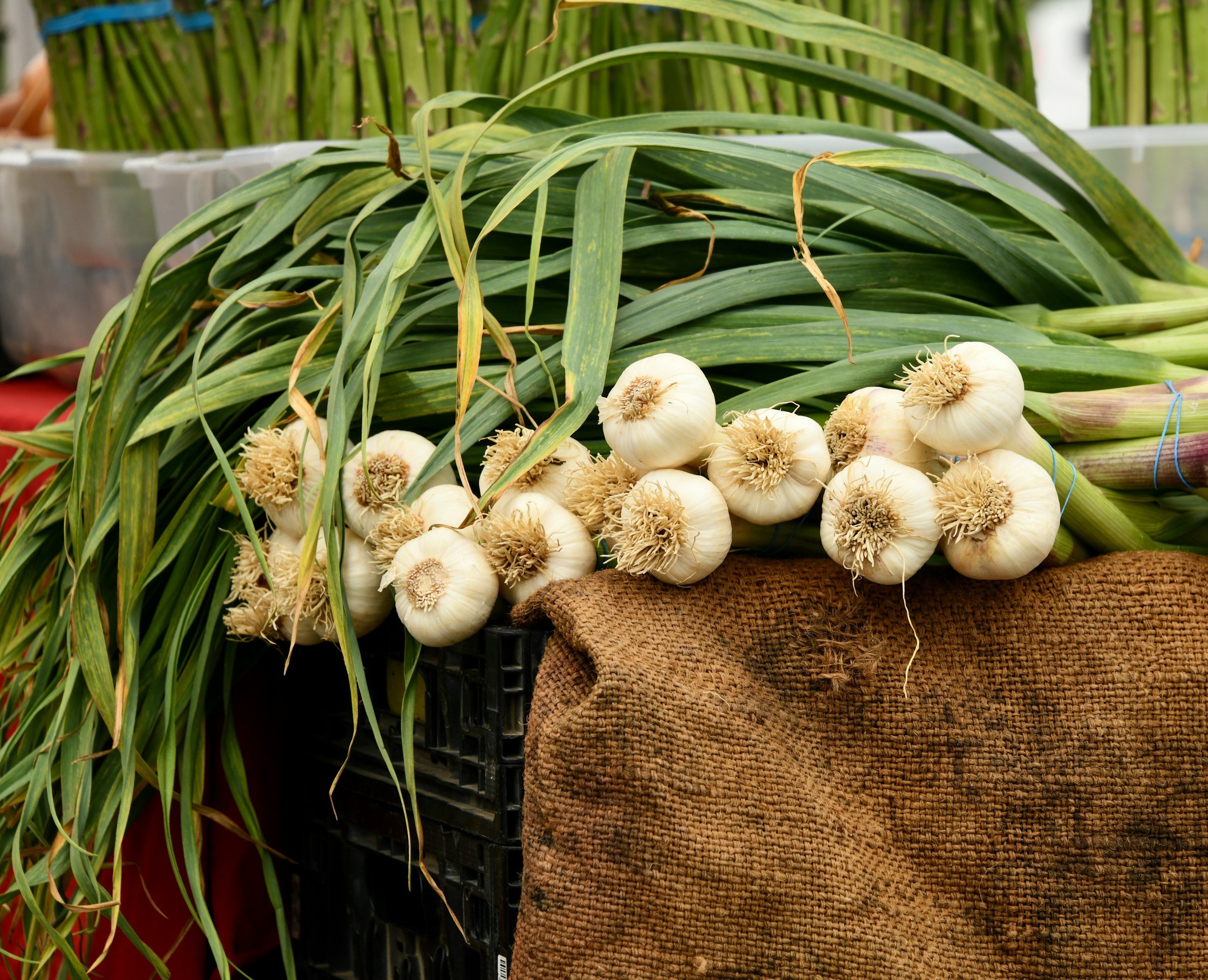
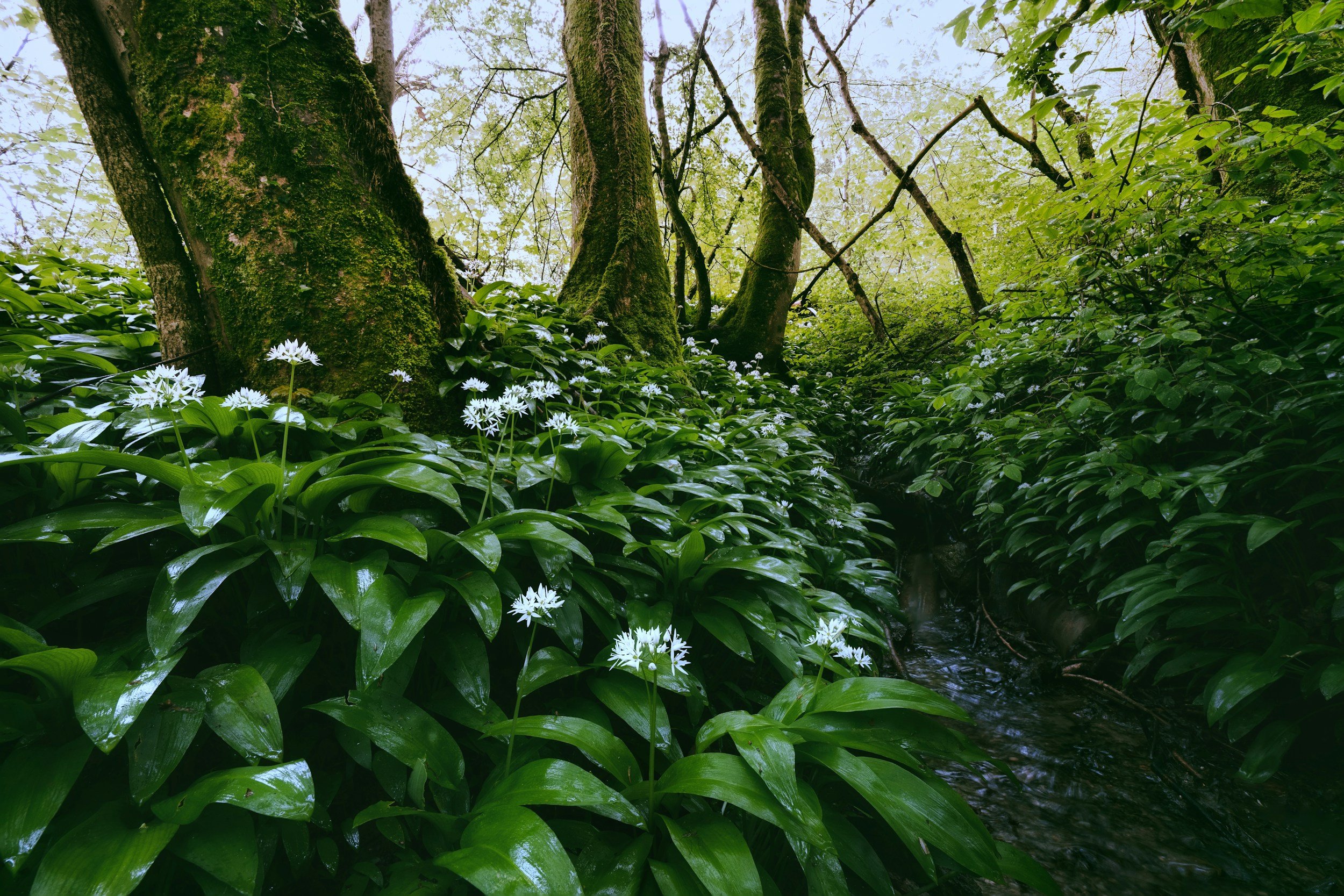
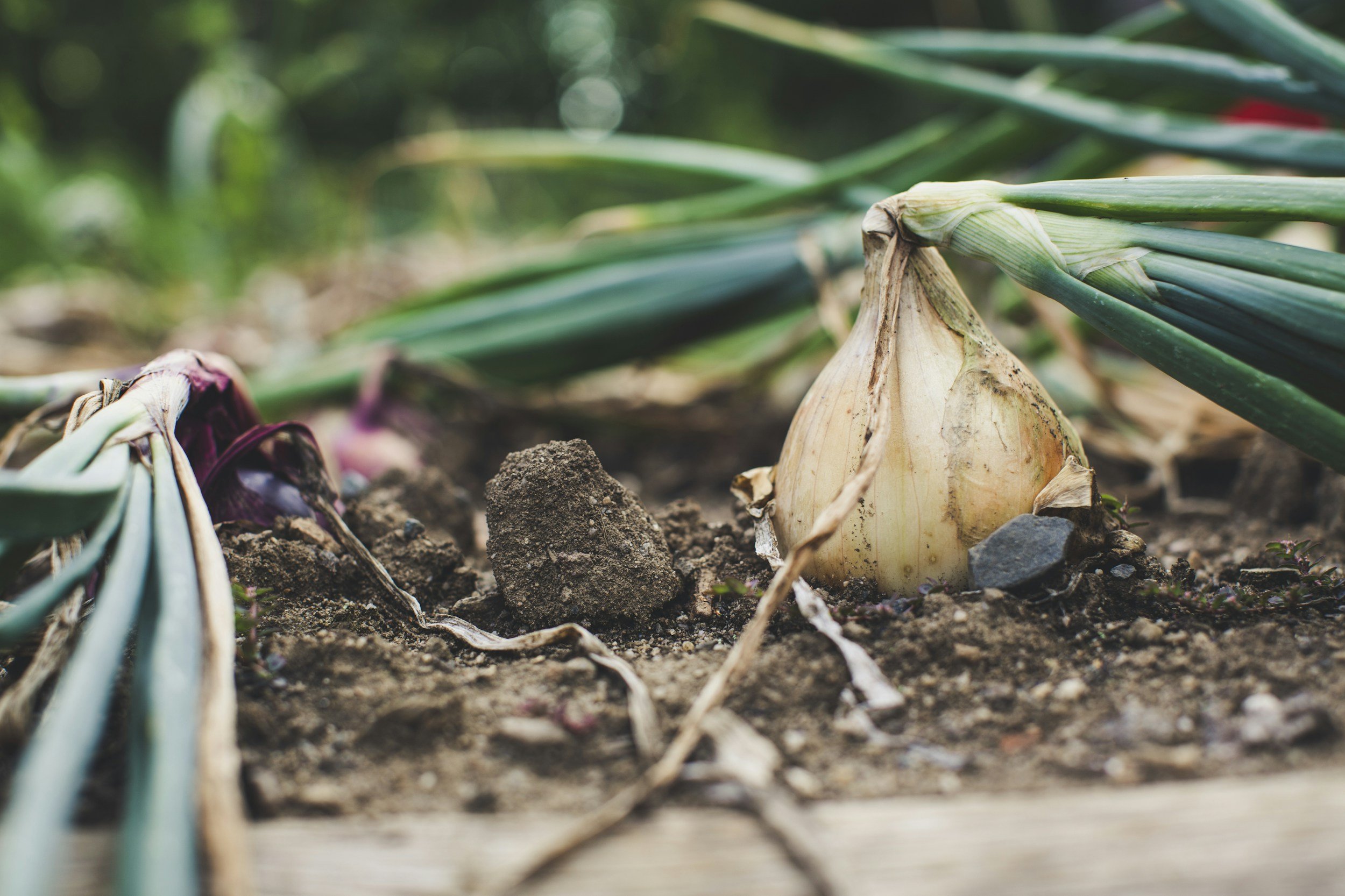
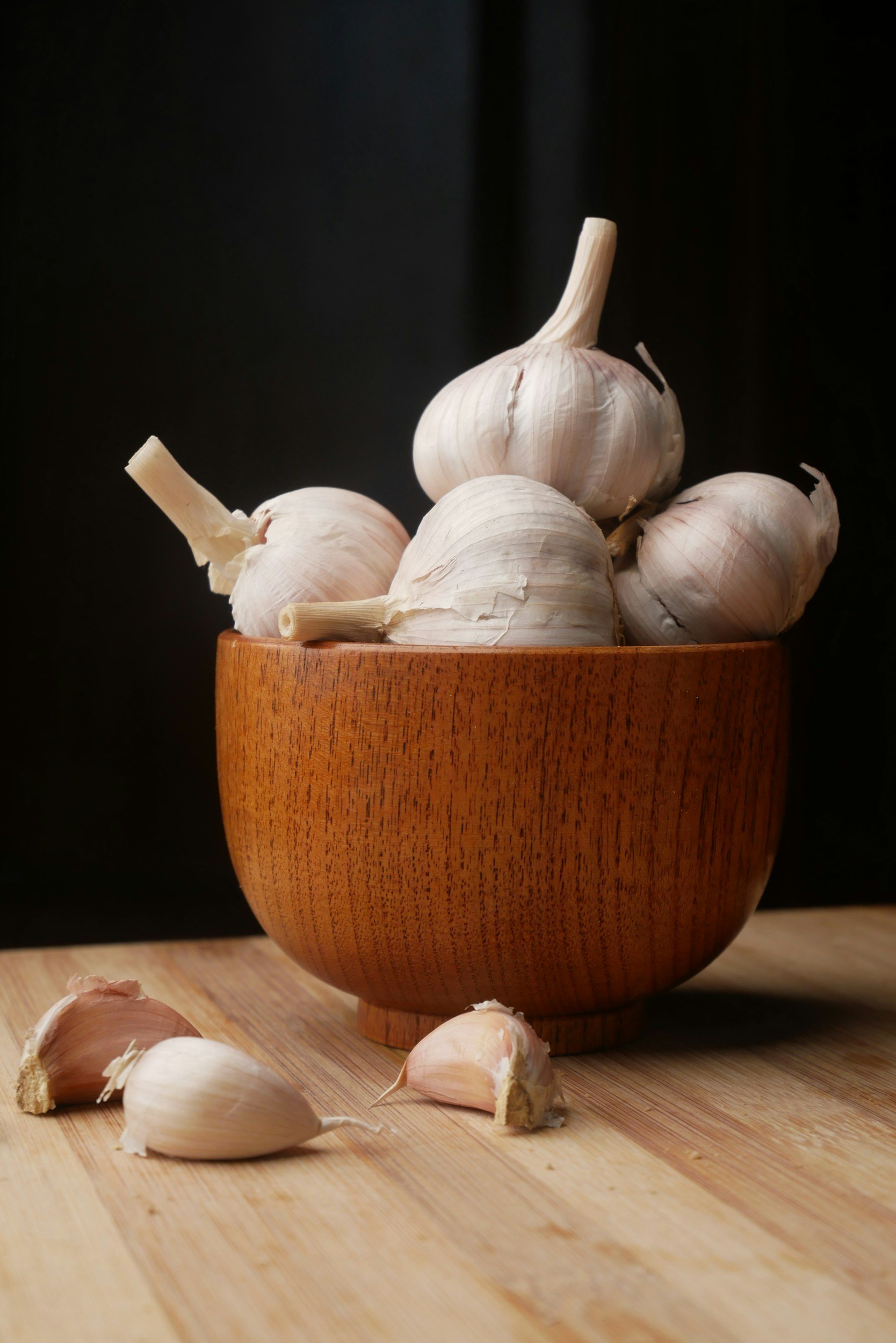
Sources
Bartram, T. (1998). Bartram’s encyclopedia of herbal medicine. Constable.
Fisher, C. (2018). Materia medica of western herbs (Rev. ed.). Aeon Books.
Hedley, C., & Shaw, N. (2020). A herbal book of making and taking. Aeon Books.
Hoffmann, D. (2003). Medical herbalism: The science and practice of herbal medicine. Healing Arts Press.
McIntyre, A. (2019). The complete herbal tutor (Revised & expanded ed.). Aeon Books.
Royal Botanic Gardens, Kew. (n.d.). Plants of the World Online. https://powo.science.kew.org/
Mills, S., & Bone, K. (2013). Principles and practice of phytotherapy: Modern herbal medicine (2nd ed.). Churchill Livingstone; Elsevier.
Barnes, J., Anderson, L. A., & Phillipson, J. D. (2013). Herbal medicines (3rd ed.). Pharmaceutical Press.
Benzie, I. F. F., & Wachtel-Galor, S. (Eds.). (2011). Herbal medicine: Biomolecular and clinical aspects (2nd ed.). CRC Press; Taylor & Francis.
Evans, W. C. (2009). Trease and Evans’ pharmacognosy (16th ed.). Elsevier.
Disclaimer: This page is for educational purposes only. Consult a qualified medical herbalist before using herbs, especially during pregnancy, when trying to conceive, while breastfeeding, for medical conditions, or with children.
Read the full disclaimer → Medical Disclaimer.





